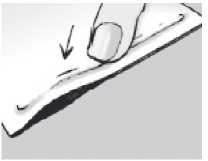Versatis 5% Medicated Plaster
1. What Versatis is and what it is used for
2. What you need to know before you use Versatis
3. How to use Versatis
Package leaflet: Information for the user Versatis® 5% Medicated Plaster
(lidocaine)
Your medicine is known as the above but will be referred to as Versatis throughout the remainder of this leaflet.
Read all of this leaflet carefully before you start using this medicine because it contains important information for you.
- Keep this leaflet. You may need to read it again.
- If you have any further questions, ask your doctor or pharmacist.
- This medicine has been prescribed for you only. Do not pass it on to others. It may harm them, even if their signs of illness are the same as yours.
- If you get any side effects, talk to your doctor or pharmacist. This includes any possible side effects not listed in this leaflet.
What is in this leaflet:
1. What Versatis is and what it is used for
2. What you need to know before you use Versatis
3. How to use Versatis
4. Possible side effects
5. How to store Versatis
6. Contents of the pack and other information
Versatis contains lidocaine, a local analgesic, which works by reducing the pain in your skin.
You have been given Versatis to treat a painful skin condition called post-herpetic neuralgia. This is generally characterised by localised symptoms such as burning, shooting or stabbing pain.
Do not use Versatis
- if you are allergic to lidocaine or any of the other ingredients of this medicine (listed in section 6).
- if you have had an allergic reaction to other products which are similar to lidocaine, such as bupivacaine, etidocaine, mepivacaine or prilocaine.
- on injured skin or open wounds
Warnings and precautions
Talk to your doctor or pharmacist before using Versatis.
If you have severe liver disease, or severe heart problems, or severe kidney problems, you should talk to your doctor before using Versatis.
Versatis should only be used on the areas of skin after the shingles has healed. It should not be used on or near the eyes or mouth.
Lidocaine is broken down in your liver to several compounds. One of these compounds is 2,6 xylidine which has been shown to cause tumours in rats when given lifelong in very high doses. The significance of these findings in humans is not known.
Children and adolescents
Versatis has not been studied in patients under 18 years of age. Therefore it is not recommended for use in this patient population.
Other medicines and Versatis
Tell your doctor or pharmacist if you are taking, have recently taken or might take any other medicines.
Pregnancy, breast-feeding and fertility
If you are pregnant or breast-feeding, think you may be pregnant or are planning to have a baby, ask your doctor or pharmacist for advice before taking this medicine.
Versatis should not be used in pregnancy unless clearly necessary.
There are no studies of the plaster in breast-feeding women.
When using Versatis, only very small amounts of the active substance lidocaine may be present in the blood stream.
An effect on breast-fed infants is unlikely.
Driving and using machines
An effect of Versatis on the ability to drive and use machines is unlikely. Therefore you may drive or operate machinery whilst using Versatis.
Versatis contains propylene glycol, methyl parahydroxybenzoate and propyl parahydroxybenzoate
The plasters contain propylene glycol (E1520) which may cause skin irritation. In addition it contains methyl parahydroxybenzoate (E218) and propyl parahydroxybenzoate (E216) which may cause allergic reactions. The allergic reactions may sometimes occur after you have been using the plaster for some time.
Always use this medicine exactly as your doctor has told you. Check with your doctor or pharmacist if you are not sure.
The usual daily dose is to use between one and three plasters of the size of the painful areas of your skin. Versatis may be cut into smaller pieces to fit the affected area. You should not use more than 3 plasters at the same time.
The plasters should be removed after 12 hours of use, so that you have a 12 hour period with no plaster.
You can choose to apply Versatis during the day or during the night.
Usually, you will feel some pain relief on the first day you use the plaster, but it may take up to 2 - 4 weeks until the full pain-relief effect of Versatis is seen. If after that time you still have a lot of pain, please talk to your doctor because the benefits of the treatment must be weighed against potential risks (see Section 2 under 'Warnings and precautions').
Your doctor will check how well Versatis is working at regular intervals.
Before you stick Versatis on the affected area
- If the painful area of skin has hairs on it, you can cut the hairs off using scissors. Do not shave them off.
- The skin should be clean and dry.
- Creams and lotions may be used on the affected skin during the period when you are not wearing the plaster.
- If you have had a recent bath or shower, you should wait until your skin cools before using the plaster.
Sticking the plaster on
Step 1: open the sachet and remove one or more plasters

• tear open or cut the sachet along the dotted line
• when using scissors, be careful not to damage the plasters
• take out one or more plasters depending on the size of the painful area on your skin
close the sachet tightly after use the plaster contains water, and will dry out if the sachet is not closed properly.
I
I
I
I
I
Step 2: close the sachet
